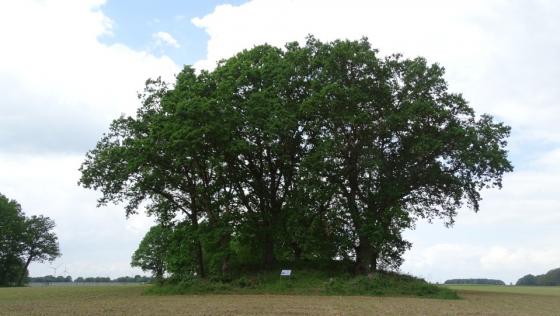taken from the on-site information board:
The megalithic tomb of Heinbockel
Only one end stone, two opposite support stones and a capstone testify to a megalithic tomb from the Neolithic (the younger Stone Age) in Heinbockel. The accompanying drawing illustrates the general principle according to which megalithic tombs have been erected: The longitudinal sides of the burial chambers are formed by paired boulders, the conclusion on the narrow sides is formed by a eratic block. The capstones rest on the stones.
Over the centuries, the megalithic tombs were largely destroyed because their stones were sought after for construction purposes. An impressive example of such a changeable tomb-to-quarry history is this remnant of a megalithic tomb. It is a monument in the double sense. On the one hand, it bears witness to a type of burial in the Neolithic period, on the other hand, the handling of later generations with these graves. (One of the best-preserved megalithic tombs in the district of Stade stands on the road from Hamburg to Groß Sternberg.)
















